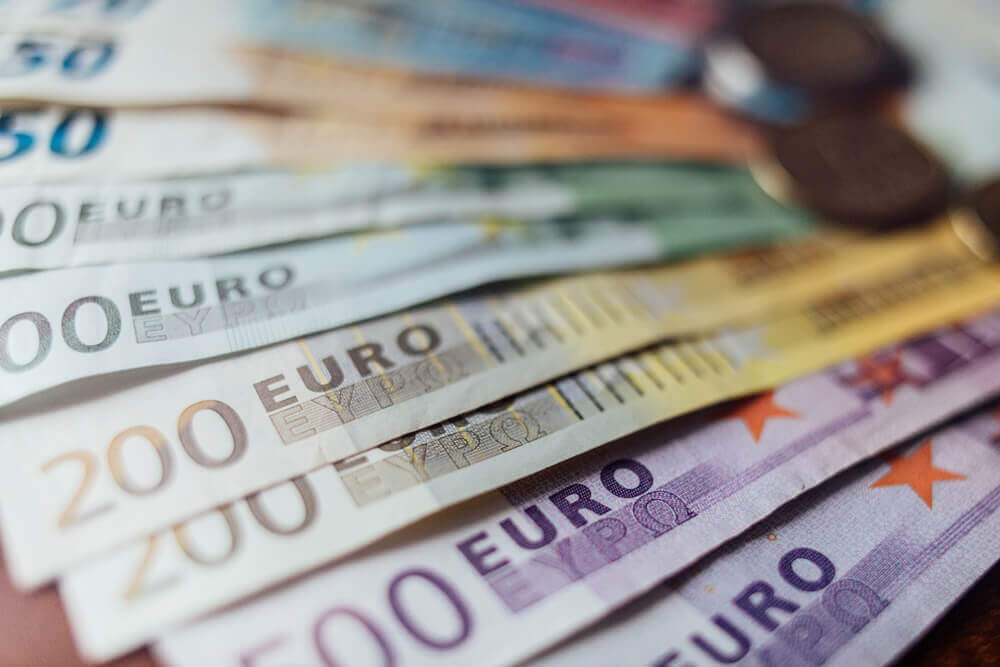
Euro Slips To 2-Month Low Preceding ECB’s Action
On Wednesday trading, the euro slipped to its lowest level in two months. Expectations that the European Central Bank (ECB) could introduce aggressive monetary easing have recently surfaced.
The European currency was down by 0.17% to 1.1131, hitting its weakest value since May 31. The euro also previously declined by 0.5% and lost about 0.7% this week.
Incidentally, the decline in the euro’s value has accelerated before the policy meeting on Thursday. Markets have already trimmed expectations for an ECB rate cut.
However, they still anticipate a dovish ruling, increasing the chances for an aggressive September easing.
According to Yukio Ishizuki, a senior currency strategist, “Attempts within the currency market to price in dovish moves or language by the ECB have gathered pace over the last few days, leading to the euro’s steep decline.”
Ishizuki added that the critical point is not necessarily “whether the ECB eases this week or not,” but what direction current ECB President Draghi seeks to trail about policy decisions.
Sterling Drops After Johnson Wins Election
The euro also slumped in synchronization with the pound as the latter trod toward a two-year low.
The sterling was on the receiving end of pessimistic investor action after Boris Johnson won the election for the new British prime minister.
Prospect of a no-deal Brexit or, in Johnson’s own words, a “heavy Brexit,” elevated right after he won.
Sterling slumped to touch a lower 1.2430 value, treading towards a fourth straight day of losses. The pound is also inching nearer the 1.2382-level, the currency’s two-year-low reached last week.
Dollar Highs and the Fed’s Rate-Cut
The greenback was going head-to-head with the yen, sliding to 108.04 yen. The dollar pulled back from a one-week high of 108.290 overnight.
An increase in U.S. Treasury yields bolstered the currency as investors started to cut uncertain losses as Sino-U.S. trade negotiations undergo discussions.
On Monday, U.S. Trade Representative Robert Lighthizer and fellow senior officials will travel to Shanghai to take part in face-to-face meetings with Chinese officials.
The U.S. dollar index, which tracks the value of the greenback against a basket of rival currencies, soared to a five-week high of 97.50. Previously, the index gained nearly 0.5%.
Demand for the greenback became reinforced after Washington reached a deal to finally lift borrowing limits of the U.S. government.
Analysts believe that increased U.S. borrowing would constrict the country’s money supply through its banking system, in turn, strengthen the dollar.
Ayako Sera, a senior market economist, said that the greenback is “supported as market participants continue to discount the likelihood” of Fed rate-cuts by an aggressive 50-basis-point easing at next week’s Federal Open Market Committee (FOMC) meeting. Sera emphasized the euro’s weakness ahead of the ECB as well.
Market expectations of a 50-basis-point cut by the Federal Reserve at its July 30-31 meeting previously intensified this month. Sentiments from a few senior Fed officials also added to the speculation.
However, investors have since muffled the more-than-aggressive easing and are now fully pricing in a suppressed 25-basis-point cut.
Over in Australia, the Aussie dollar plunged to a 12-day low of 0.6979 after Westpac Bank moved its forecast’s timing ahead from November to October instead.




